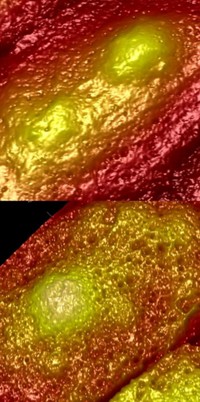Advertisement
Grab your lab coat. Let's get started
Welcome!
Welcome!
Create an account below to get 6 C&EN articles per month, receive newsletters and more - all free.
It seems this is your first time logging in online. Please enter the following information to continue.
As an ACS member you automatically get access to this site. All we need is few more details to create your reading experience.
Not you? Sign in with a different account.
Not you? Sign in with a different account.
ERROR 1
ERROR 1
ERROR 2
ERROR 2
ERROR 2
ERROR 2
ERROR 2
Password and Confirm password must match.
If you have an ACS member number, please enter it here so we can link this account to your membership. (optional)
ERROR 2
ACS values your privacy. By submitting your information, you are gaining access to C&EN and subscribing to our weekly newsletter. We use the information you provide to make your reading experience better, and we will never sell your data to third party members.
Pharmaceuticals
Nanotubes To Deliver Chemo Where And When It’s Needed
Drug Delivery: External magnetic field triggers roomy nanotubes to release the two drugs they carry
by Tim Wogan
October 18, 2012

Unusually large and roomy carbon nanotubes could deliver chemotherapy drugs directly to tumors and release them on command, according to a new study (Nano Lett., DOI: 10.1021/nl301865c). A harmless magnetic field triggers the nanotubes to release drugs once inside tumor cells, which should protect the rest of the body from the drugs’ toxic side effects, researchers say.
Since the 1980s, researchers have developed various nanoscale vessels to transport anticancer drugs through the body. Some of these carriers have made it into the clinic. However, biologist John Marshall of Brown University says that researchers are unable to externally control drug release. Previous attempts have proven only partially successful or impractical, such as one delivery vehicle triggered to open by ultraviolet radiation, which is harmful and does not penetrate tissue.
Marshall, Brown nanomaterials expert Jimmy Xu, and colleagues synthesized nanotubes using chemical vapor deposition. Unlike traditional nanotubes, which have a diameter of around 1 nm, these nanotubes had a diameter of about 40 nm and so, the researchers figured, would have room to carry drug molecules. In fact, they are spacious enough to carry two drugs at once. The team filled the nanotubes with a temperature-sensitive hydrogel loaded with the chemotherapeutic agents paclitaxel and C6-ceramide. When researchers applied an alternating magnetic field, it induced an alternating electric current in the nanotubes. The nanotubes’ electrical resistance to that current generated heat that liquefied the gel, releasing the loaded drugs.
The team tested the nanotubes on pancreatic cancer tissue. After waiting 12 hours for the cells to take up the nanotubes, the researchers turned on the magnetic field. Forty-eight hours later, more than 70% of the cancer cells had died. To kill the same fraction of cells without the aid of nanotubes, the researchers had to use 100 times as much drug.





Join the conversation
Contact the reporter
Submit a Letter to the Editor for publication
Engage with us on Twitter